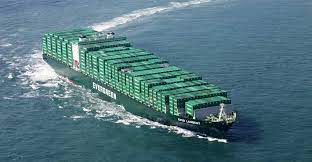Courtesy : www.adv-polymer.com
Green ship
However, the shipping industry consumes 300 million tons of fuel every year, releasing around 3 percent of the world’s carbon-dioxide emissions into the atmosphere.
The shipping sector recognizes its power to change the impact on the environment and play a leading role.
At APC, we see customers’ desire to explore green transportation and more people wanting their companies to act responsibly for more significant decarbonization. As an industry leader in marine cargo tank coatings and filling the increased demand for high-performance tank linings, APC also witnesses first-hand the evolution the industry is experiencing and the critical role we play in the maritime value chain.
This article has incorporated several industry developments and discussions from various sources about the value of a green ship and potential strategies to increase energy efficiency and decarbonize global shipping. With MarineLINE® cargo coating protection, tanks can be cleaned faster and use less fuel for heating, reducing fuel consumption and emissions.
The shipping industry is dynamic, and the growing demand for tank containers and the urgency to take measures for reducing the carbon footprint is substantial. The increasing standards made by the IMO have triggered research and development of “green” technology for the shipping industry. The shipping industry has to create and apply innovative measures in order to comply with the new regulations.
Let’s get started . . .
Chapters
- 1What is Green Shipping/Green Marine?
- 2Cutting Sulfur Oxide Emissions to Improve Air Quality
- 3Ballast Water and Steps to Reduce Hazards Associated With It
- 419 Green Shipping Solutions to be Compliant
Chapter 1
What is Green Shipping/Green Marine?
The environment must be considered in all the details of shipping, from a build of a new vessel through its decommissioning. The International Maritime Organization (IMO) is helping to reduce the impact on the marine industry by regulating exhaust emissions, anti-fouling, ballast water, and more.
The industry will become more environmentally friendly by regulation. The International Maritime Organization proposed a 2020 Sulfur limit on the exhaust from the stacks of ocean-going ships. The IMO has called for ships to halve their total greenhouse-gas emissions by 2050.
Carbon emissions and other gases are caused by the burning of fuels in the environment. A green ship would leave the least amount of carbon emissions. “Green ship” is a name given to any seagoing vessel that contributes towards improving the present environmental condition in some way. Green ship technology adopts procedures to decrease emissions, consume less energy, and be more efficient.
Green Marine, a voluntary environmental certification program for the North American marine industry, addresses key environmental issues in regard to air, land, and water pollution. They offer a plan for maritime companies to reduce their overall environmental footprint.
Resources:
Bright Hub Engineering, Green Ship Design for Ship Building
Green Marine, Green Marine Environmental Program
Chapter 2
Cutting Sulfur Oxide Emissions to Improve Air Quality
The International Maritime Organization is taking action to clean up shipping emissions by reducing the sulfur content in ships’ fuel oil. In response, the shipping industry started considering several solutions, including low Sulfur fuel oil (LSFO), marine gas oil (MGO), liquid natural gas (LNG) and even burning the current fuel and having scrubbers on the exhaust stacks.




